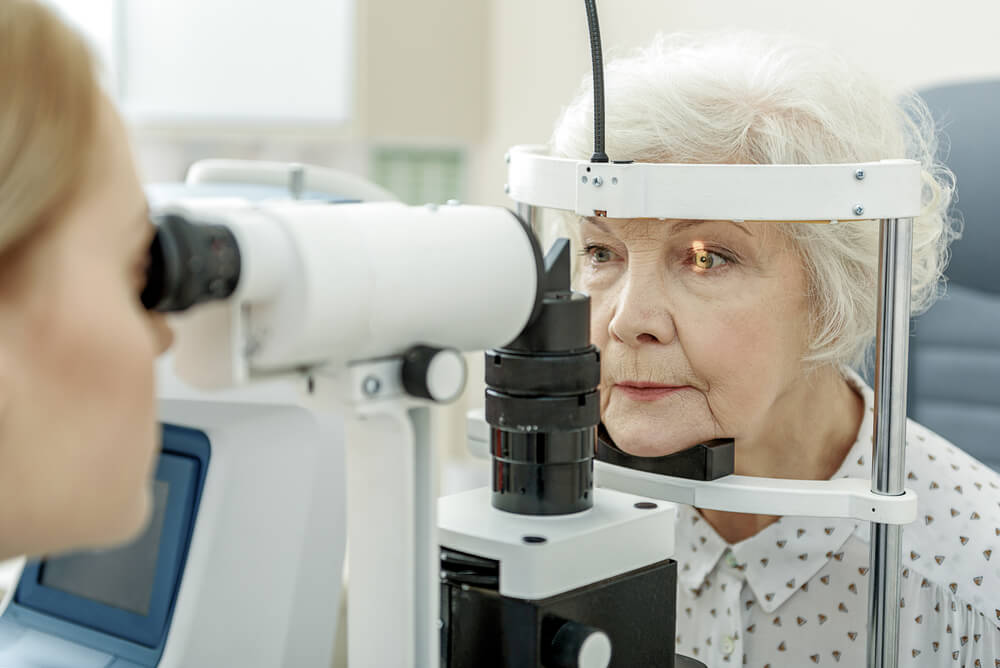
Posted by: Missouri Eye Institute in Blog on April 24, 2019

Have you had problems with peripheral vision in both eyes? Do you have intense headaches?
Are you experiencing halos around lights? These are all symptoms of glaucoma. Keep reading to learn more about this sneaky eye condition!
Glaucoma is a family of eye conditions that cause damage to the optic nerve. The optic nerve is imperative for good vision. Damage to the optic nerve often happens because of high pressure in the eye.
For people over the age of 60, glaucoma is one of the leading causes of blindness. Anyone can get glaucoma, but it is more common in older adults.
Most types of glaucoma do not have warning signs, which is why it can be a secret thief of sight. For patients with glaucoma, symptoms won’t appear until their vision has already changed.
What makes glaucoma so dangerous is any damage to the optic nerve is irreversible. Once you lose any sight because of glaucoma, it can’t come back.
This is why it’s important to have regular eye exams! Your doctor will measure your eye pressure to be able to check it in case of a change.
This will help them make a diagnosis early on and provide you with proper treatment. If glaucoma is found early on, the chances of vision loss decrease. You may even be able to prevent any vision loss altogether!
Depending on the type and stage of your glaucoma, the signs and symptoms vary.
Open-angle Glaucoma:
In the advanced stages, you will experience tunnel vision. You may also experience irregular blind spots in your peripheral or central vision. If this occurs, it will usually be in both eyes.
Acute angle-closure Glaucoma:
With acute angle-closure, you may experience headaches, eye pain, nausea, and blurry vision. Your eyes may also get red and you may see halos around lights.
If you start noticing any of these symptoms, go see your eye doctor! Untreated glaucoma will lead to blindness.
About 15% of people with glaucoma experience blindness in at least one eye within 20 years. This is even with treatment, which is why early detection and treatment are crucial!
Since glaucoma can cause blindness before diagnosis, it’s important to know risk factors.
Common risk factors that increase your chances of developing glaucoma include the following:
If you have conditions like high blood pressure or diabetes, your risk also increases. The same is true if you have very thin corneas, have an eye injury, and use steroid eye drops for a long time.
There are ways to prevent vision loss or slow the process down. It is important to get regular eye exams to identify any symptoms of glaucoma in the early stages.
If you know that you have a family history of glaucoma, you should have more frequent eye exams. Other ways to reduce your risks include exercising, and living a healthy lifestyle.
Can’t remember the last time you saw your eye doctor? Let’s change that! Contact Missouri Eye Institute in Springfield, MO to schedule an eye appointment today!
Tags: glaucoma
Springfield
1531 E Bradford Parkway Ste 100
Springfield, MO 65804
Branson
1000 James F. Epps Rd Ste 2
Branson, MO 65616
Joplin
4500 E 32nd St
Joplin, MO 64804